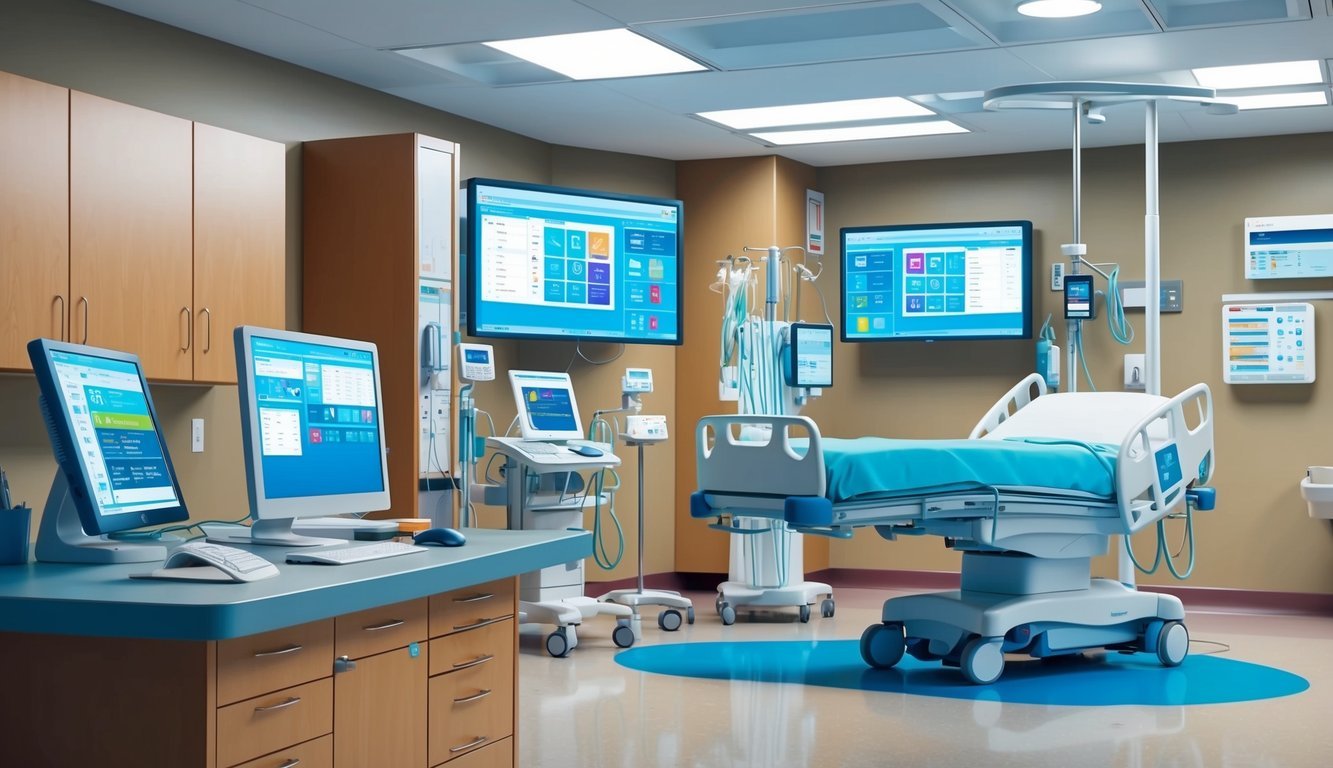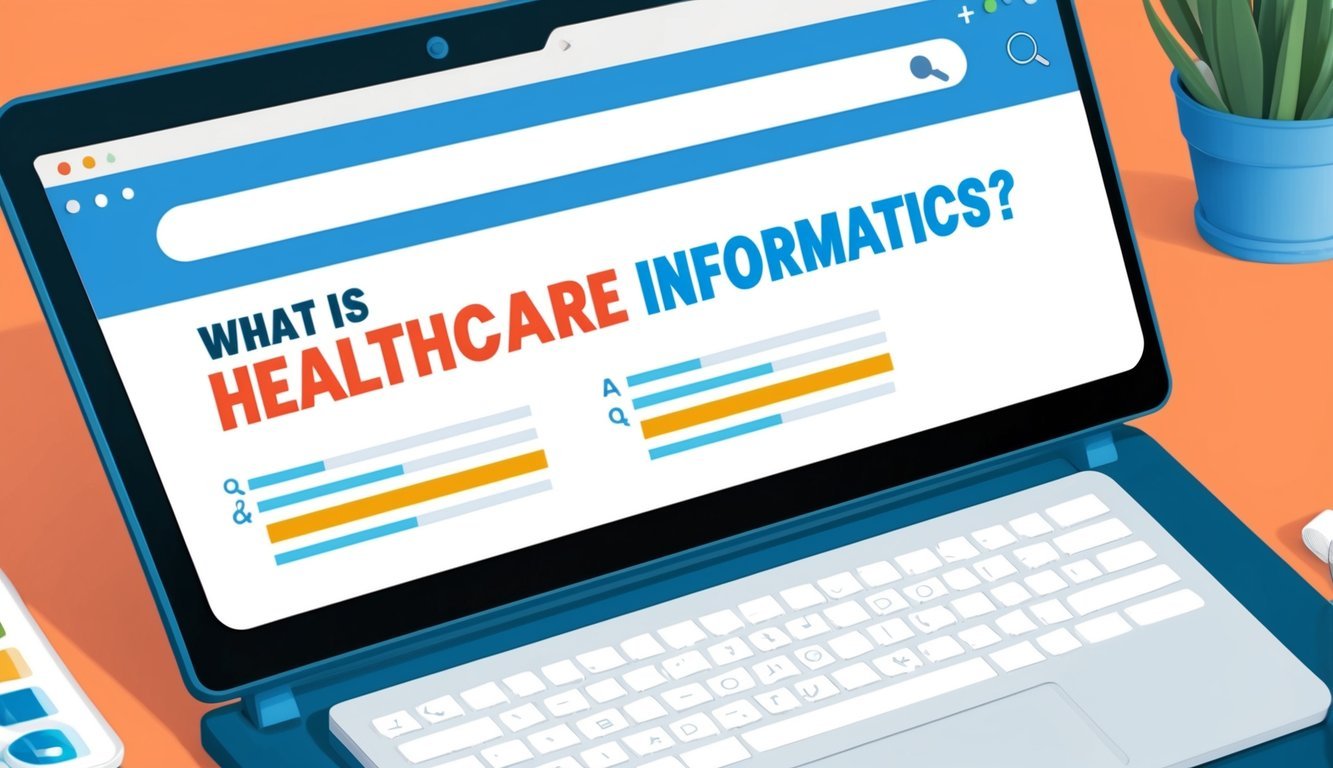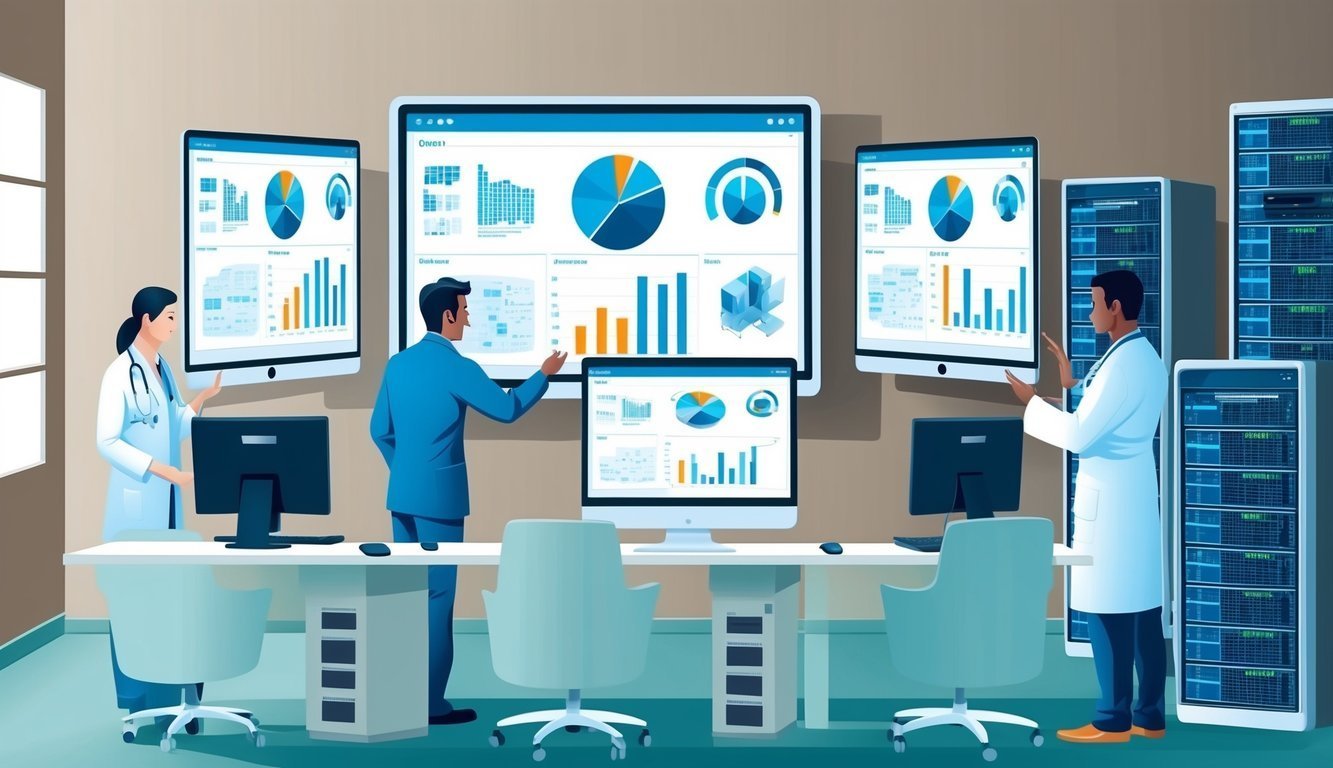In today’s digital age, healthcare informatics is a vital field that combines healthcare, information technology, and data management to enhance patient care and public health outcomes.
As technology evolves, the integration of data analytics plays a crucial role in improving healthcare systems.
How does health informatics affect the quality of care and the way health data is managed?
Through the use of health information systems and electronic health records, healthcare informatics streamlines processes.
This enables healthcare providers to make informed decisions based on accurate data.
This field not only supports clinicians, but also plays a significant role in research and policy-making by leveraging data to guide public health initiatives.
With the increasing demand for skilled professionals, understanding the fundamentals of healthcare informatics can open up exciting career opportunities for you.
Key Takeaways
- Healthcare informatics combines technology and healthcare to improve patient care.
- Effective health data management is crucial for quality healthcare delivery.
- You can explore various career paths in the growing field of health informatics.
Fundamentals of Healthcare Informatics
Healthcare informatics is a key area that combines medical knowledge with technology.
This field helps improve patient care through better data management and innovative solutions.
Understanding its components is essential for navigating today’s healthcare environment.
Defining Health Informatics
Health informatics focuses on the effective management of health data.
It integrates information technology, medical practices, and data analytics.
As a professional in this field, you engage with clinical informatics, which looks at how health data affects patient care.
This discipline supports better decision-making and enhances the quality of care through systems like electronic health records (EHRs).
Through EHRs, healthcare providers can share information easily.
This accessibility allows for quicker diagnoses and more personalized treatment plans.
Additionally, it aids in population health management and research, ultimately improving public health outcomes.
The Evolution of Health IT
The journey of health information technology (Health IT) has changed significantly over the years.
Initially, data was recorded on paper, making information hard to access.
As technology advanced, digital health solutions emerged, giving rise to health informatics.
Now, many healthcare organizations are adopting digital transformation strategies.
They utilize advanced medical technology like telehealth and wearable devices.
This evolution allows for real-time monitoring of patient health.
Data analytics plays a vital role in making sense of large health datasets.
The transition to health informatics has also enhanced interoperability, allowing different systems to communicate effectively.
Consequently, you can expect more integrated and efficient healthcare services moving forward.
Health Data Management
In healthcare, managing data is crucial for delivering quality patient care.
Effective health data management involves organizing, storing, and exchanging health information efficiently to improve decision-making and enhance healthcare outcomes.
Electronic Health Records (EHR)
Electronic Health Records (EHR) are digital versions of patients’ paper charts.
They contain comprehensive health information, including medical history, medications, treatment plans, and test results.
EHRs are designed to be shared across different healthcare settings, making it easier for providers to access and use patient information.
Key features of EHRs include:
- Improved Accessibility: Healthcare providers can access information from various locations, ensuring timely patient care.
- Enhanced Coordination: EHRs promote better collaboration among specialists, primary care providers, and hospitals.
- Data Analytics: EHRs facilitate data analytics by allowing healthcare organizations to analyze patient information for trends and outcomes.
Using EHRs can streamline documentation, reduce errors, and enhance the overall efficiency of health information management.
Health Information Exchange
Health Information Exchange (HIE) enables the secure sharing of patient information among healthcare providers.
It plays a vital role in improving patient safety, reducing duplicate tests, and ensuring continuity of care.
Key points about HIE include:
- Interoperability: HIE platforms allow different EHR systems to communicate, making data transfer seamless.
- Patient-Centric Care: Providers can access complete patient records, leading to more informed decision-making and tailored treatment plans.
- Faster Response Times: Quick access to health information can improve response times in emergencies.
Utilizing HIE ensures that healthcare providers have the necessary information to provide high-quality care.
It also supports data management initiatives by promoting the accurate exchange of medical records and health data.
For more on HIE’s role, refer to this resource.
Informatics in Patient Care
Informatics plays a crucial role in enhancing patient care by improving decision-making and facilitating remote health management.
This section explores two important aspects: Clinical Decision Support and Telemedicine with Remote Monitoring.
Clinical Decision Support
Clinical Decision Support (CDS) systems assist healthcare providers in making informed decisions about patient care.
These systems analyze patient data, providing evidence-based recommendations tailored to individual cases.
Key features of CDS include:
- Alerts and reminders: Notifications for drug interactions or overdue screenings.
- Guidelines: Access to best practices and protocols for various health conditions.
- Diagnostic tools: Assistance in interpreting test results and suggesting possible diagnoses.
By utilizing CDS, you can enhance patient outcomes and reduce errors, ultimately improving overall health outcomes.
For more information on this topic, you can visit the American Nurses Association website on Nursing Informatics.
Telemedicine and Remote Monitoring
Telemedicine leverages technology to provide care remotely, making it easier for you to connect with healthcare professionals.
Through telehealth services, you can engage in virtual visits, which improve access to care, especially for patients in rural areas.
Remote monitoring devices track vital signs and other health metrics in real-time.
These devices include:
- Wearables: Track heart rate, activity level, and sleep patterns.
- Home monitoring systems: Measure data like blood pressure and glucose levels.
This approach not only empowers you to manage your health better, but also allows healthcare providers to respond quickly to changes in your condition.
Remote monitoring can be linked to improved patient outcomes by providing timely interventions.
For further insights, check out What Is Health Informatics? for details on how informatics can enhance care.
Technology and Data in Public Health
Technology and data play crucial roles in enhancing public health.
These elements help improve disease prevention, promote health education, and ensure efficient healthcare delivery.
Public Health Informatics
Public health informatics combines data, technology, and information systems to support public health practice.
It focuses on community and population health by analyzing patterns and trends in health data.
Through data collection, analysis, and dissemination, informatics allows health officials to track diseases effectively.
For example, informatics systems enable epidemic tracking, making it easier to recognize outbreaks and respond quickly.
By using tools like machine learning, public health professionals can enhance predictive medicine.
This helps forecast disease spread and potential health threats.
Key functions include:
- Data management: Organizing health data efficiently.
- Reporting: Sharing findings with relevant stakeholders.
- Decision support: Informing health policy and practice.
Impact of Big Data
Big data significantly impacts public health by providing insights that were previously unattainable.
With the ability to gather and analyze vast amounts of healthcare data, professionals can identify trends, measure outcomes, and improve patient care.
For instance, analytical tools powered by artificial intelligence can process data from various sources, such as electronic health records and social media.
This allows for better population health management by identifying high-risk groups and tailoring interventions accordingly.
Some benefits of big data in public health include:
- Enhanced research: Improved study methods and participant recruitment.
- Resource allocation: Efficiently directing resources to areas of greatest need.
- Timely responses: Quick action against emerging health threats through advanced epidemic tracking.
Big data, combined with technology, enables more effective and informed public health initiatives.
Education and Career in Health Informatics

Pursuing a career in health informatics requires a blend of education and practical experience.
You will find various educational programs and a promising job market for those trained in this field.
This section will cover the types of academic programs available and give you insights into the job market for health informatics professionals.
Academic Programs and Certificates
Many universities offer specific degrees in health informatics.
You can often choose from bachelor’s, master’s, or even certificate programs.
Some key academic options include:
- Bachelor’s Degree: Introduces basic informatics concepts and healthcare systems.
- Master’s Degree: Provides advanced knowledge needed for roles like Clinical Informatics Specialist.
- Certificates: Short-term programs focusing on specific skills, ideal for current healthcare professionals seeking further education.
Programs may include courses like data analysis, health information systems, and project management.
These studies equip you with essential skills for managing health data and improving healthcare delivery.
For more information, consider checking programs offered at institutions such as Northeastern University.
Health Informatics Job Market Overview
The job outlook for health informatics is promising.
Many organizations are increasing their demand for qualified professionals to manage healthcare data effectively.
Roles you might consider include:
- Clinical Informatics Specialist
- Health Information Manager
- Data Analyst in Healthcare Settings
The job market is expanding in different areas, including hospitals, clinics, and health technology companies.
According to recent data, employment in health informatics is projected to grow by about 15% in the next few years.
This growth reflects the increasing need for electronic health records and data analysis in healthcare.
For more insights, you can explore job resources on sites like Public Health Degrees.
Frequently Asked Questions

This section addresses common questions about healthcare informatics, covering its differences with clinical informatics, career prospects, educational requirements, and practical applications.
You will find specific details that clarify the role and importance of healthcare informatics.
How are healthcare informatics and clinical informatics different?
Healthcare informatics focuses on the management of healthcare data and information technology across the entire healthcare system.
In contrast, clinical informatics specifically deals with the application of information technology in clinical areas to improve patient care.
What are the career prospects in healthcare informatics?
Career prospects in healthcare informatics are strong, with a growing demand for professionals who can analyze and manage health data.
Roles include health informatics specialists, data analysts, and project managers.
Job opportunities are available in hospitals, healthcare organizations, and technology firms.
What educational qualifications are required for a career in healthcare informatics?
To pursue a career in healthcare informatics, you typically need at least a bachelor’s degree in health informatics, information technology, or a related field.
Many positions require a master’s degree or higher for advanced roles.
Certifications can also enhance your qualifications and career prospects.
How does health informatics integrate with nursing?
Health informatics supports nursing by providing tools for documentation, data analysis, and decision-making.
It allows nurses to access patient records electronically, improving workflow and enhancing patient care.
Informatics also aids in research and the implementation of evidence-based practices in nursing.
What are some practical examples of health informatics applications?
Practical applications of health informatics include electronic health records (EHRs), telemedicine platforms, and patient portals.
These tools improve communication among healthcare providers and enhance patient engagement.
They also enable data analysis to track health trends and outcomes.
What are the primary categories of informatics?
The primary categories of informatics include clinical informatics, public health informatics, and consumer health informatics.
Each category focuses on specific areas of healthcare and uses data to improve outcomes and services.
Understanding these categories can help professionals specialize in their fields and meet industry demands.

